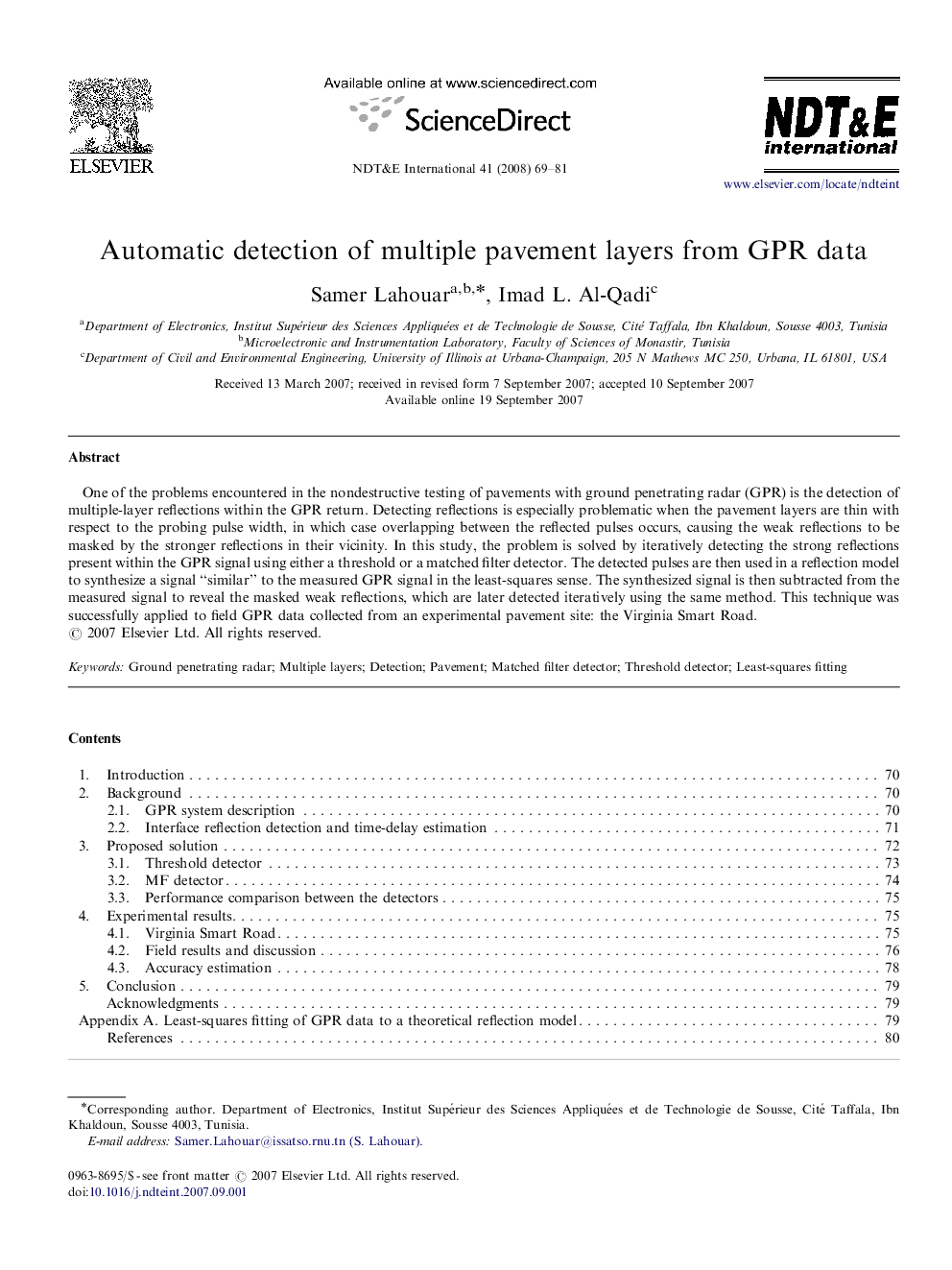| Article ID | Journal | Published Year | Pages | File Type |
|---|---|---|---|---|
| 295636 | NDT & E International | 2008 | 13 Pages |
One of the problems encountered in the nondestructive testing of pavements with ground penetrating radar (GPR) is the detection of multiple-layer reflections within the GPR return. Detecting reflections is especially problematic when the pavement layers are thin with respect to the probing pulse width, in which case overlapping between the reflected pulses occurs, causing the weak reflections to be masked by the stronger reflections in their vicinity. In this study, the problem is solved by iteratively detecting the strong reflections present within the GPR signal using either a threshold or a matched filter detector. The detected pulses are then used in a reflection model to synthesize a signal “similar” to the measured GPR signal in the least-squares sense. The synthesized signal is then subtracted from the measured signal to reveal the masked weak reflections, which are later detected iteratively using the same method. This technique was successfully applied to field GPR data collected from an experimental pavement site: the Virginia Smart Road.
